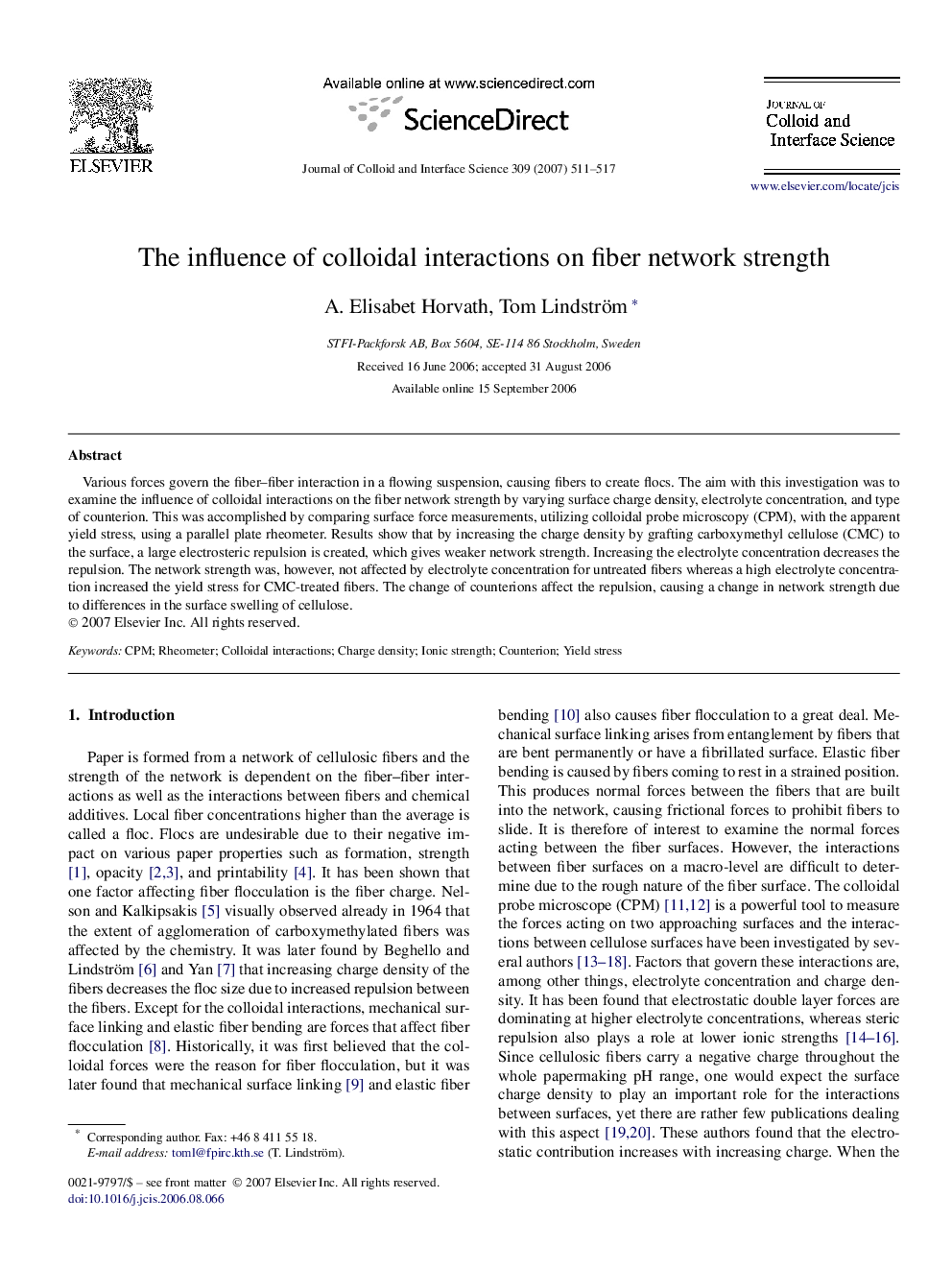| Article ID | Journal | Published Year | Pages | File Type |
|---|---|---|---|---|
| 612387 | Journal of Colloid and Interface Science | 2007 | 7 Pages |
Various forces govern the fiber–fiber interaction in a flowing suspension, causing fibers to create flocs. The aim with this investigation was to examine the influence of colloidal interactions on the fiber network strength by varying surface charge density, electrolyte concentration, and type of counterion. This was accomplished by comparing surface force measurements, utilizing colloidal probe microscopy (CPM), with the apparent yield stress, using a parallel plate rheometer. Results show that by increasing the charge density by grafting carboxymethyl cellulose (CMC) to the surface, a large electrosteric repulsion is created, which gives weaker network strength. Increasing the electrolyte concentration decreases the repulsion. The network strength was, however, not affected by electrolyte concentration for untreated fibers whereas a high electrolyte concentration increased the yield stress for CMC-treated fibers. The change of counterions affect the repulsion, causing a change in network strength due to differences in the surface swelling of cellulose.
Graphical abstractThe surface charge density was altered by grafting of carboxymethyl cellulose to cellulose surfaces and the interactions between the surfaces was investigated using colloidal probe microscopy and parallel plate rheometer.Figure optionsDownload full-size imageDownload as PowerPoint slide
